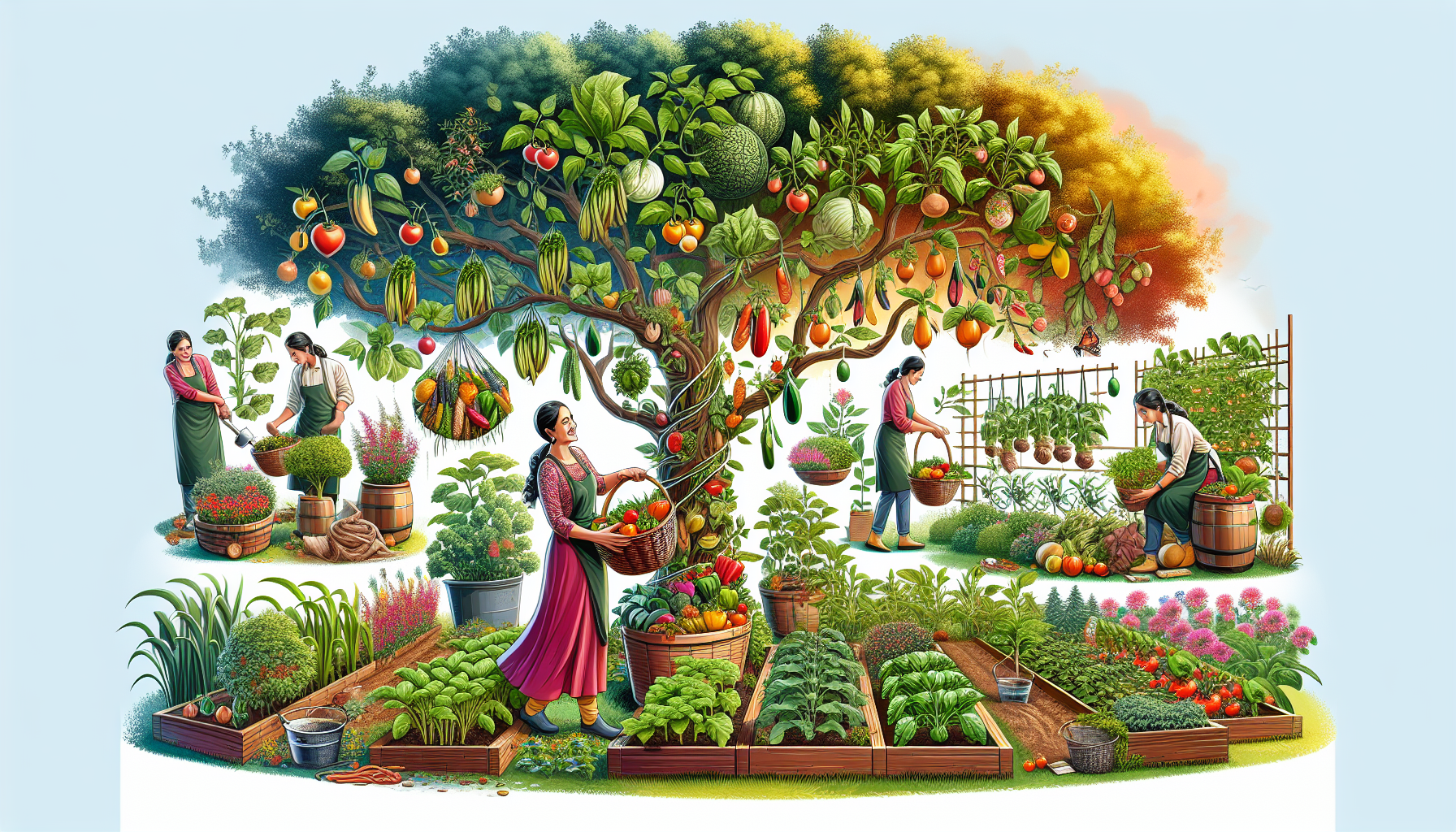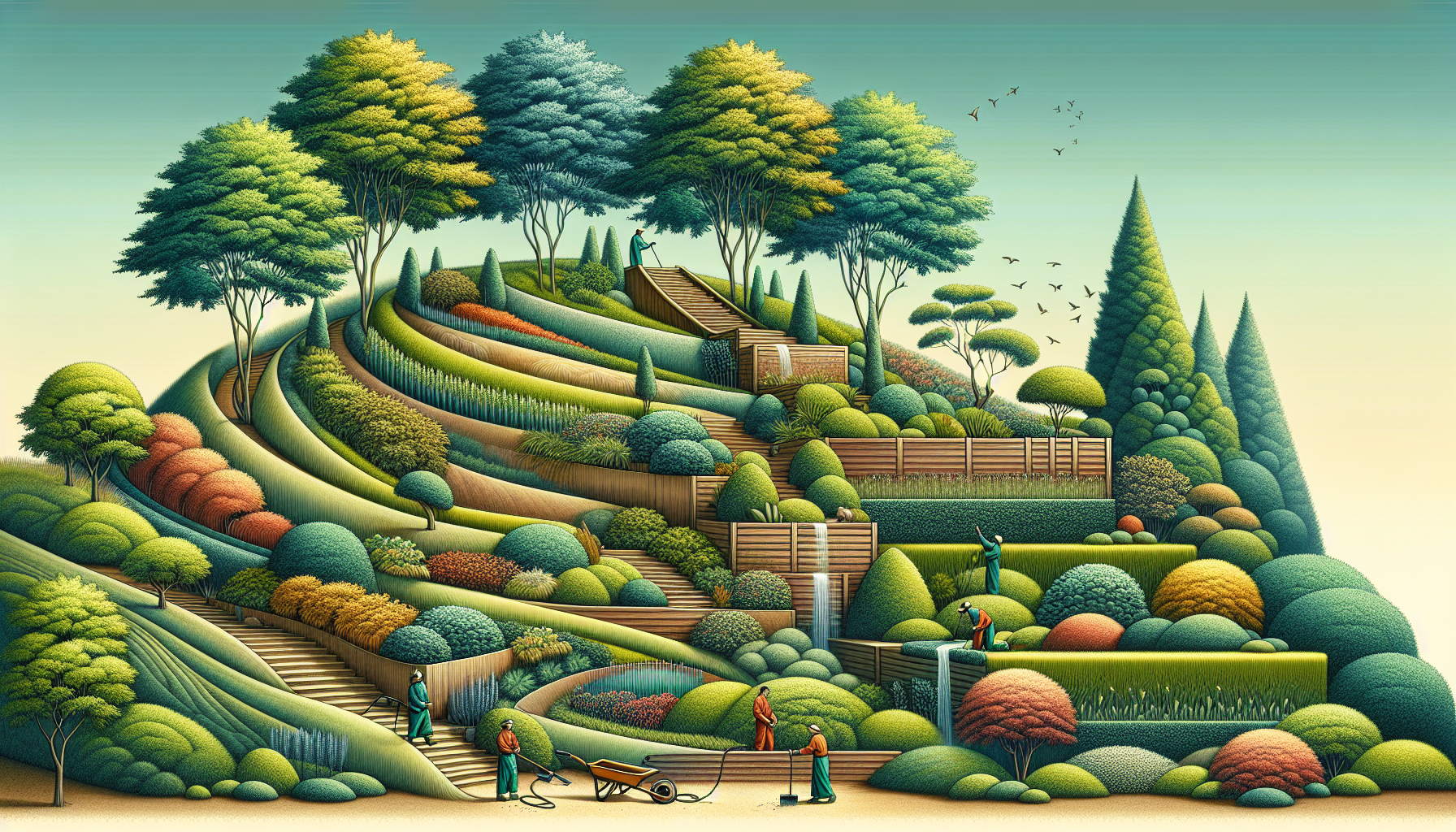Creating a drought-resistant landscape has become a pivotal strategy for gardeners and landscapers around the world. This comprehensive course delves into the art and science of designing, implementing, and maintaining landscapes that are not only beautiful but also resilient in the face of drought conditions. From understanding the foundational principles of drought resistance, through the careful selection of plants and efficient water use strategies, to the essential routines of care and adaptation, participants will gain valuable insights and practical skills. Embrace the journey towards creating sustainable, water-wise gardens that thrive even in challenging climates.
Lesson 1

Mastering Drought-Resistant Gardening: A Comprehensive Guide
Embarking on the journey of creating a drought-resistant landscape is not only a wise investment but a pivotal step towards embracing sustainable gardening practices. Drought-resistant gardening offers myriad benefits, from conserving vital water resources to ensuring your garden thrives even in arid conditions. In this guide, we’ll navigate the essentials of crafting a landscape that withstands drought, focusing on soil health, water conservation, and understanding your local climate.
Understanding the Essentials of Drought-Resistant Gardening
In the realm of drought-resistant landscapes, the foundation lies in understanding its core principles. Here, we focus on how to improve soil health, effectively conserve water, and tailor your gardening practices to your specific climate. Additionally, we’ll delve into inspirational examples that showcase the transformative power of drought-resistant practices.
- Soil Health: A cornerstone of any thriving garden, especially one that’s drought-resistant. Amending your soil with organic matter can improve its water retention capabilities.
- Water Conservation Techniques: From savvy irrigation methods to simple practices like mulching, conserving water plays a vital role in drought resistance.
- Local Climate Knowledge: Understanding your garden’s microclimate is essential. This awareness can guide your plant selection and watering practices, ensuring they align with local conditions.
Inspiration from Successful Drought-Resistant Landscapes
Exploring the successes of established drought-resistant gardens offers invaluable insights. These real-world examples not only serve as inspiration but also highlight practical strategies that have proven effective in various climates. Through these case studies, we gather lessons on plant selection, design considerations, and innovative water conservation techniques.
Practical Strategies for Your Drought-Resistant Garden
Transitioning towards a drought-resistant landscape may seem daunting at first, yet, with the right strategies, it’s entirely feasible. Among the most critical steps you can take is selecting native or drought-tolerant plants which inherently require less water. Incorporating hardscaping elements like rocks or gravel can further reduce your garden’s water dependency while adding aesthetic appeal. Additionally, optimizing your irrigation setup, for instance, through drip irrigation, can significantly enhance water efficiency.
Bring Your Drought-Resistant Garden to Life
In conclusion, crafting a drought-resistant landscape is an enriching process that not only conserves water but also creates a resilient, thriving garden. Through understanding the key principles of drought resistance, drawing inspiration from successful examples, and implementing practical strategies, you’re well on your way to establishing a beautiful and sustainable garden. Remember, the journey to drought resistance is ongoing, and with each step, you’re contributing to a more sustainable and water-wise world.
Lesson 2

Designing Your Drought-Resistant Landscape
Stepping into the realm of drought-resistant landscaping opens a world of eco-friendly possibilities, turning the challenge of dry conditions into a canvas for sustainable beauty. This comprehensive guide walks you through planning your drought-resistant landscape, ensuring that every element from plant selection to water management harmonizes with nature’s rhythm.
Begin with a Thorough Assessment
First things first, understanding the lay of the land is crucial. Evaluating your space not only reveals its potential but also highlights the unique challenges it may present. This evaluation encompasses soil type, sunlight exposure, and existing vegetation, forming the groundwork for your drought-resistant strategy.
Embrace the Principles of Xeriscaping
Xeriscaping, a cornerstone of drought-resistant landscaping, champions minimal water use without sacrificing visual appeal. This principle encourages the selection of native plants that are naturally adapted to local climate conditions, thus requiring less water. Moreover, incorporating hardscaping elements, such as stones and pebbles, can add texture and interest while reducing water-dependent areas.
Selecting the Right Plants
Choosing the right plants is perhaps the soul of creating a drought-resistant garden. Opt for species that are not only native to your area but also known for their resilience in dry conditions. Succulents, lavenders, and ornamental grasses are exemplary choices, offering both beauty and drought tolerance.
| Plant Type | Benefits |
|---|---|
| Native Plants | Low maintenance, enhances local biodiversity |
| Succulents | Retains moisture, diverse forms and colors |
| Ornamental Grasses | Adds texture, thrives in poor soil |
Water-Smart Techniques
Efficient water use forms the backbone of a drought-resistant landscape. Drip irrigation, known for its precision, ensures water reaches the roots directly, minimizing waste. Furthermore, embracing rainwater harvesting not only conserves water but also contributes to a sustainable ecosystem. Covering the soil with mulch reduces evaporation, keeping the soil moist for longer periods.
Maintain and Adapt Your Drought-Resistant Landscape
Your drought-resistant landscape, now beautifully laid out and thriving, is a testament to sustainable gardening. Yet, the journey doesn’t end here. Continuous learning, observing, and adapting your practices will keep your garden resilient through changing climates and seasons. Remember, a drought-resistant landscape is not just about surviving dry conditions but thriving in harmony with the environment.
Lesson 3

Maintaining Your Drought-Resistant Landscape
Cultivating a drought-resistant landscape is a dynamic, fulfilling process that marries sustainability with beauty. This guide focuses on the critical aspects of implementing and maintaining your landscape, ensuring it not only survives but thrives in drought conditions. From ground preparation to the nuances of seasonal adjustments, every step is a stride towards a resilient, water-wise garden.
Preparing the Ground with Care
The success of a drought-resistant garden begins with the soil. Amending your garden’s soil to improve its water retention capabilities can make a significant difference. Incorporating organic matter or compost enhances soil structure, allowing it to better support drought-tolerant plants. The act of planting, when done thoughtfully, ensures that each plant has the space it needs to grow without excessive competition for resources.
Routine Care for Lasting Resilience
Consistent care is the backbone of a drought-resistant garden’s longevity. Efficient watering practices, such as the use of drip irrigation or soaker hoses, ensure that water goes directly to the roots where it’s needed most, minimizing waste. Mulching plays a dual role; it conserves soil moisture and suppresses weeds, thus reducing competition for water. Regular monitoring allows you to catch and address any signs of stress early on, keeping your garden vibrant and healthy.
Adapting for Success
An adaptable approach is key to maintaining a flourishing drought-resistant landscape. As seasons change, so do the needs of your garden. Periodic assessments help identify what’s working and what might need tweaking, allowing your garden to evolve over time. This might involve introducing new drought-tolerant species, adjusting irrigation schedules, or expanding mulched areas to further reduce water needs.
Embracing the Evolution of Your Drought-Resistant Garden
Your journey in creating and nurturing a drought-resistant landscape is a testament to resilience and sustainability. This living, breathing space not only conserves precious water resources but also provides a sanctuary for local wildlife and a place of beauty and tranquility for you. Remember, a successful drought-resistant garden is not static; it grows and changes, always moving towards greater harmony with the natural world.
Drought-resistant landscaping marks a significant step towards sustainable gardening and responsible water usage. This course has equipped you with the knowledge and tools to design, implement, and nurture landscapes that stand resilient against drought conditions, emphasizing the importance of water conservation, the selection of native plants, and the implementation of efficient irrigation systems. As you apply these principles and techniques, you will contribute to a more sustainable and environmentally friendly world. To test your understanding and readiness to create your drought-resistant garden, a 10-question quiz follows this conclusion. Embrace this opportunity to reflect on your new knowledge and prepare to transform your outdoor spaces.
Test Your Knowledge With this short Quiz
Click here to copy your score to share on facebook!







